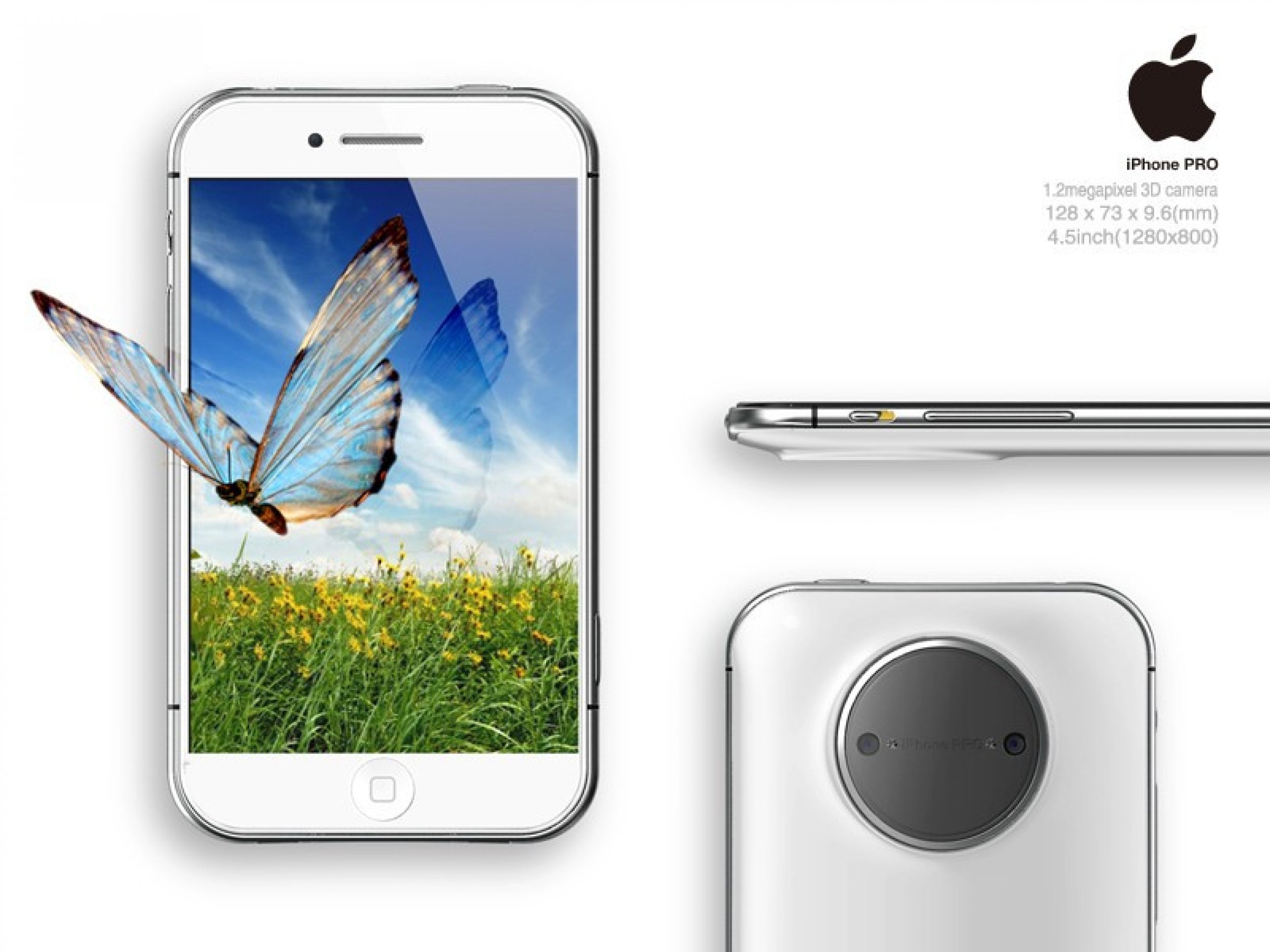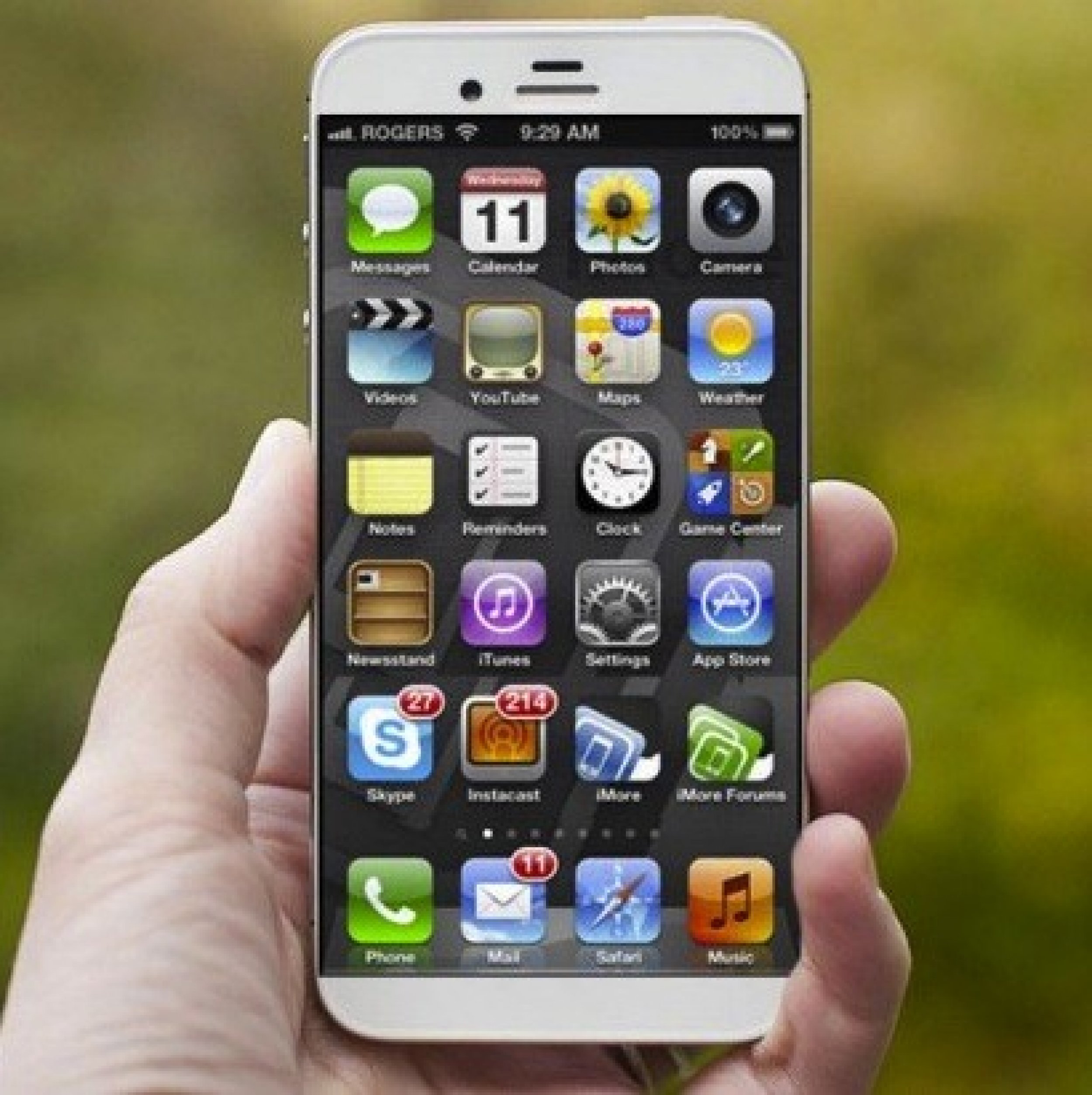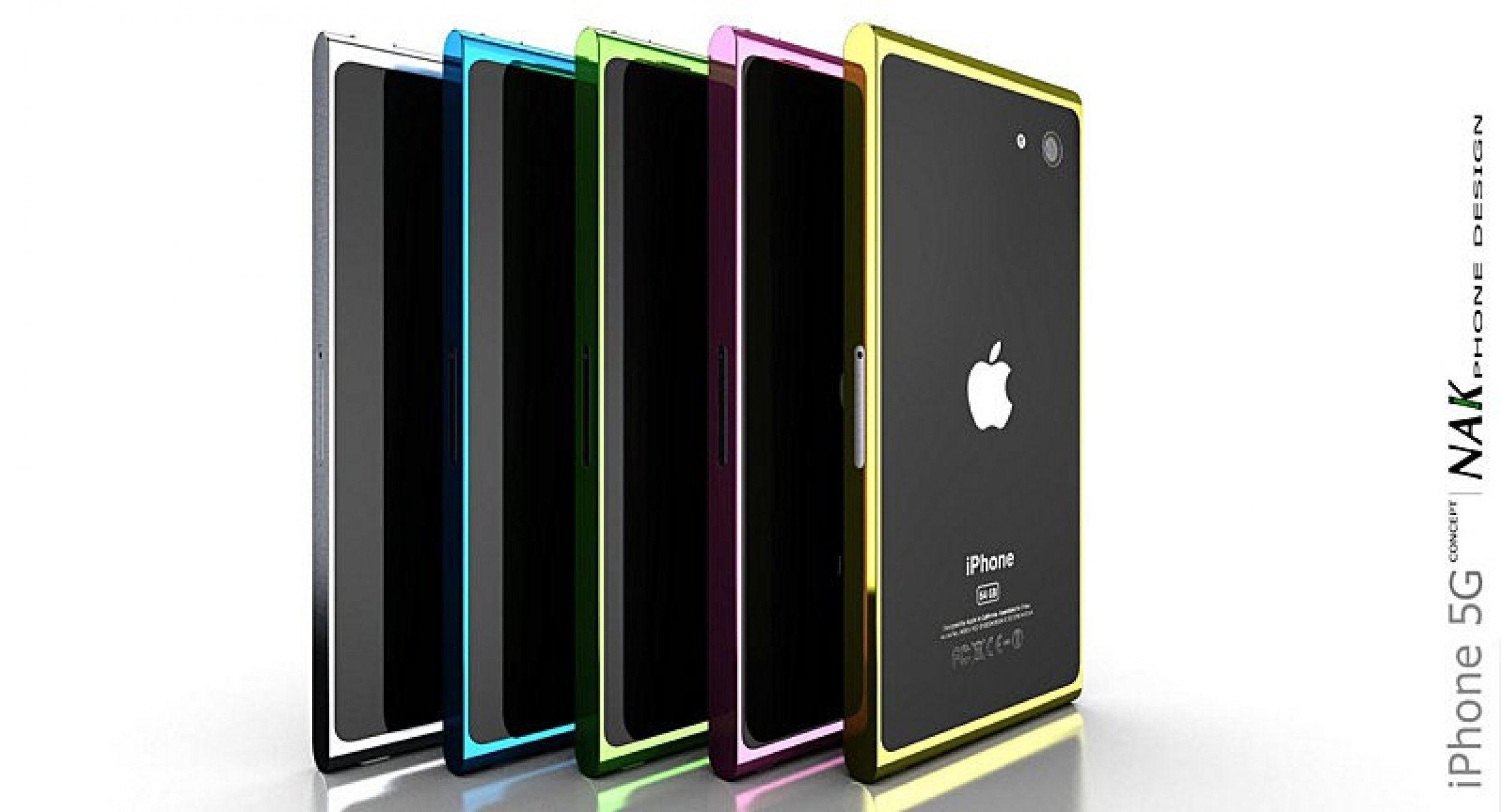Apple iPhone 5 Release: How Liquid Metal, In-Cell Technologies Accommodate New Features [RUMORS, PICTURES]
It appears Apple wants to make its next smartphone, presumably called the iPhone 5, significantly thinner and lighter than its older models. Sources from within Apple's foreign supply chains reportedly told Digitimes that the iPhone 5, expected to launch in the second or third quarter of 2012, will adopt in-cell touch panels manufactured by Sharp and Toshiba Mobile Display.
An improvement in yield rates of the in-cell touch panels at Sharp and TMD has persuaded Apple to choose to cooperate with Japan-based panel makers, the sources said.
By effectively removing a layer between the multi-touch screen and the LCD display, these in-cell panels far outperform current on-cell touch screens. AUO Optronics, based in Taiwan, explains the difference:
Compared to In-Cell technology, the conventional technologies have an additional sensing glass, which not only increases the overall thickness of the LCD, but also adds an extra lamination process step, translating to increased cost and relatively lower yield and reduced transmittance, the company said. Compared to the traditional resistive touch control, in-cell voltage sensing not only has the above advantages, but also is superior in that its sensitivity less subjective to environment changes, no calibration mechanism required, and capability of supporting multiple-point touch control.
AUO Optronics adds that the touch sensors are vastly improved in in-cell technologies, but they're still powerful enough to resist scratches on the touch panel, resulting in a longer product lifetime.
In contrast to the traditional resistive and digitizer touch controls, since a mere light touch can be picked up, the operation interface of In-cell charging sensing is more humanized, AUO said. In addition, charging sensing not only can support multiple point touch control, but further support pen writing at present to meet different requirements by the clients.
Digitimes said Sharp will build the in-cell panels at its 5.5G lines, while Toshiba Mobile Display would use its 6G lines for production. They also said Sharp and Toshiba Mobile Display will ramp up in-cell production during Q2 2012.
So in-cell technology helps create more precise glass, but Reed Sanders from Technorati points out another powerful benefit:
The current displays in the iPhone 4 and 4S involves a layer of sensing glass on the outside of an inner LCD screen. This capacitive touchscreen makes it thicker as it has two layers and an extra step in the assembly line. Moving to the single layer in-cell touch panel would remove a step in production as well, speeding up the manufacturing process. When you manufacture 30 million iPhone devices, saving two seconds becomes a large amount.
Apple currently relies on TPK Holdings and Wintek to build its glass-on-glass touchscreen panels for its current iPhone models, but the move toward Sharp and Toshiba Mobile Display has resulted in TPK Holdings saying it is working on touch on lens solutions that similarly use a single piece of glass. TPK alleges that its TOL technology is more suitable for high-end customized devices, and that the market is big enough for more than one kind of technology that makes thinner displays.
This move to make a thinner iPhone is bolstered by another recent report from Korean publication ETNews, which reported, citing industry sources, that Apple may make its next iPhone considerably thinner and lighter thanks to some recently licensed patents for liquid metal, which the company acquired in 2010 from Delaware-based Liquidmetal Technologies.
The next flagship phones of [Apple and Samsung] are expected to adopt unprecedented materials for their main bodies, that is, ceramic for the Galaxy S3 and liquid metal for iPhone 5, both being thin, light and highly resistant to external impacts, said ETNews' Kim In-Soon. The new phase of the rivalry is because neither one of them can get a decisive edge over the other solely with its OS and AP specifications, features or design.
Apple acquired the licensing rights to various patented amorphous metal alloys from Liquidmetal Technologies in August 2010, but ETNews claims Apple will create a liquid metal alloy of zirconium, titanium, nickel and copper to create an outer surface smooth like liquid.
If these rumors prove to be true, the iPhone 5 could be dramatically thinner than its predecessors. The iPhone 4S and iPhone 4 both measure .37 inches (9.3 mm) deep and weighs 4.9 ounces (140 grams), and while that isn't very thick or heavy for a smartphone, making these elements lighter makes room for more features, processors, and battery life.
Based on patent filings and reports, it looks like Apple plans to pack plenty of new features in to the iPhone 5. If Apple hopes to include NFC technology, LTE chipsets, advanced haptics, or even a 3D camera system, it needs much more room within the device without making it any bigger than it already is. The solution? Make the other elements smaller and lighter.
Apple had reportedly hoped to include some of these technologies in the iPhone 4S, but without liquid metal technologies or in-cell touch displays, the phone would have needed to be significantly thicker to accommodate a larger circuit board and a bigger battery. Now it looks like Apple has a few answers for how to pack more innovation into a smaller device.
Possible Features, Specs in the iPhone 5
Bigger screen. On March 21, Apple reportedly ordered 4.6-inch screens, to be featured in the company's next iPhone. The report came from a South Korean publication, the Maeli Business Newspaper, which quoted an unnamed industry source, according to Reuters. But just two days later, iMore's Ritchie said the iPhone 5 would keep the same 3.5-inch screen -- the same size as all previous generation iPhones -- but said it could get a little bigger than its predecessors, although not nearly as big as the 4.5-inch-plus Android smartphones..
So whom to believe, the Maeli Business Newspaper, or our old pal Ritchie? The truth seems to lie somewhere in the middle. In early January, as Apple was reportedly gearing up to begin production on the iPhone 5. A source from within China's Foxconn manufacturing plant told 9 to 5 Mac that various sample iPhone 5 prototypes were floating around the factory floor, but there were a number of common features among the phones, including a display that measured at least 4 inches, and a longer and wider form factor that did not match that of the iPhone 4 or 4S. The Foxconn sources believed the iPhone 5 would retain the rectangular shape of its predecessors, which, if true, would put to bed any rumors of a slimmer teardrop design.
OLED Display. Apple is reportedly testing iPhone 5 prototypes with an A5X chip, which is the quad-core graphics processor used to power the Retina Display in the new iPad. But why would Apple need such a powerful chip for an iPhone? Given that the A5X chip is a graphics powerhouse, if Apple doesn't drastically change the physical size of the screen to 4.6 inches, it may be changing the display's overall quality.
On April 4, the Korea Times reported that Apple is interested in switching from LCD to OLED displays for its next round of iPhones and iPads. The reason behind the potential move would be Samsung, which recently launched its spinoff company called Samsung Display that aims to pivot away from LCD to focus more on OLED technology. Apple is by far Samsung's biggest customer: The Cupertino, Calif.-based company bought $7.8 billion worth of components from Samsung in 2011, ranging from memory chips to LCD panels, but the company will reportedly buy $11 billion worth of parts this year, which could mean Apple is buying more expensive display material.
Apple has plenty of money to afford OLED screens in an iPhone-sized display, and it would make sense for Apple to ask Samsung to help build its iPhone 5 displays. Samsung knows how to build big, beautiful screens for any size device: Just imagine what Samsung could do with Apple's Retina technology implemented into an OLED. Apple would effectively put distance between the iPhone and all other smartphone competitors for another five years, at the very least.
LTE Connectivity. It's already a foregone conclusion that Apple will implement radio bands for 4G LTE in the iPhone 5, given that Apple introduced the high-speed network on its new iPad, released on March 16, which was likely done as a practice run.
LTE features significantly higher download and upload speeds compared to 3G technologies, but previous implementations of LTE in smartphones tended to ravage battery life, which was a major complaint from users. If Apple wanted LTE in the iPhone 4S at the time, it would have been forced to increase the phone's thickness to accommodate a larger circuit board and a bigger battery. Apple CEO Tim Cook, in a company earnings conference call in April 2011, said first-generation LTE chipsets force a lot of design compromises.
The iPhone 4 PCB [printed circuit board] is already incredibly small, not leaving any room for an extra chip to enable LTE without shrinking the size of the battery, said Anand Shimpi, a chip expert and CEO of Anandtech.
Fortunately, Qualcomm recently unveiled the fifth iteration of its new chip, which supports TD-SCDMA, TD-LTE, HSPA+, EV-DO, embedded GPS, and LTE on TDD and FDD networks worldwide. The chip works with Android and Windows 8 devices, but there's a great chance this will be the chip inside the iPhone 5.
The iWallet. Apple won a major patent on March 6 for a piece of technology called the iWallet, which is a digital system that gives users complete control over their subsidiary financial accounts on their iPhones, and also leverages Near-Field Communication technology to complete credit card transactions directly on the phone as well. The iWallet has many different features, including giving users the ability to see their entire credit card profiles, view statements and messages from their banks, and even set parental controls for their children, should they also want to use their iPhones as digital wallets. Outside of the iPhone, users can keep track of their payments and statements within the iTunes billing system, which keeps credit card information and records safe and secure. There's a possibility that iWallet could also work with other Apple utilities, which could allow users to buy things like movie tickets directly within the apps, but only time will tell with that one.
3D Photography. Some may say 3D technology is nothing new, or possibly even overdone; Apple would argue that's because nobody has done it right. Yet.
Apple says that while existing 3D cameras and video records can get three-dimensional information from objects, they're generally incapable of getting detailed enough information in relation to the shapes, surfaces and depth of the objects. Apple's solution involves a series of systems, tools and methods to capture a 3D image by using multiple sensors and cameras. One sensor would capture a polarizing image, while two other sensors would capture two different non-polarizing images, and Apple's system would combine the images into a composite.
Apple has another solution involving different specialized sensors for capturing the image's surface information, color imaging and luminance, and combining the data into another composite that has information about the depth and plurality of surfaces. Together, these systems and methods of capturing light and image information would create an incredible 3D image that can be seen without glasses.
Advanced Haptics. In the days before Apple unveiled its new iPad in March, a rumor from left field said Apple would implement an advanced haptics system into the iPad, which would give users the sensation of texture when they touched an object on the screen. Android devices currently have a type of feedback when you press a button on a smartphone, so it's possible Apple will one-up its most fierce rival with unrivaled touch technology.
A touchscreen that created the sensation of textures would be an incredible piece of technology, but we're hoping Apple completes the puzzle with one important piece of technology from Microsoft. In mid-March, Microsoft engineers unveiled a lag-free touch screen that responds to your finger's touch in less than one millisecond. Current Apple devices only have a minor lag with their touchscreens, but this minor adjustment would make users feel like they're really touching their work, drawing a picture, or handwriting a note. Apple has proven to us time and again that simplity is the key to an enjoyable experience, but speeding up the touchscreen would make the already-popular iPhone into the best touchscreen experience ever.
Multi-player gaming. The iPhone 5 might also be the first phone to feature a new piece of software for multi-player gaming. On March 15, the U.S. Patent and Trademark Office published a patent application from Apple that describes a system for multi-player gaming, which allows groups of people to play the same game together and even see it from different perspectives according to the devices' physical relation to one another. The system actually mimics that of the Find My Friends app, in which a user's device detects other nearby devices that it recognizes as friends, and invites them to all join a common application. The technology also determines the relative position of those devices, so some games -- like turn-based role-playing games or card games -- can be played in a specific order.
Crack-proof glass. Apple's patent for crack-resistant glass, granted on Nov. 15, uses the same alumino silicate glass solution used in the iPhone 4 and 4S, but chemically treats it with potassium and sodium ions to achieve greater compression thresholds on the surface and edges of the glass, making it less susceptible to cracks.
Apple also included a handy feature that will appeal to everyone who's ever dropped their iPhone: The patent calls for a shock mount to be placed between the glass and the body of the device, which will instantly inflate if the device senses it's falling. If the iPhone's internal accelerometer senses it's falling, an actuator within the device sucks in the cover glass as it accelerates to the ground, protecting it from damage.
What else would you like to see in the iPhone 5? Would you rather see the iPhone 5 released earlier, or later for the holidays? Let us know in the comments section below.
























© Copyright IBTimes 2025. All rights reserved.






















